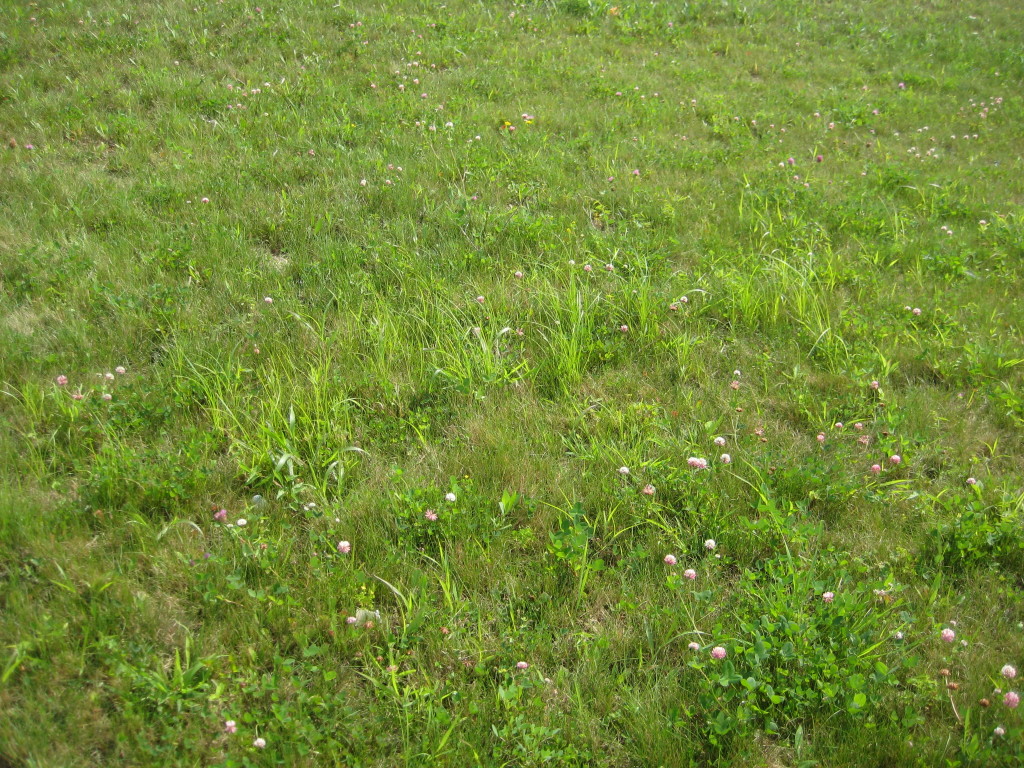I saw a sight this morning that froze my blood. There was a toddler, a hapless infant, sitting on a lawn. Not even a blanket underneath him, mind you—the poor child was sitting right on the grass. Made my blood run cold.
Why? Because it was a bad lawn.
It was nothing but blades of grass. Close-cropped and bristly as a Marine’s haircut. Not a weed to be seen, not a leaf of clover, not a dandelion, not a plantain leaf. Nothing but grass.
So what? That’s what a lawn is supposed to be, right?
Yes. But it doesn’t stay that way naturally. Weeds like dandelion, clover and plantain are highly aggressive and successful plants that adore the sunny, open habitat of lawns. When the lawn is left alone, except for occasional mowings, the clover colonizes. Spreading rapidly through the grass blades, the long runners of clover soon turn a prickly, grass-only lawn into a soft bed, ideal for toddlers to sit on. Or for cats to loll, dogs to sunbathe, robins to forage. Good lawn.
But a lawn that has clover will soon have other plants too, dandelions and plantain and such. Weeds.
So, some lawn-owners apply herbicides. Poison chemicals which target all broad-leaved species–in other words everything except grass. This seems impossible—how can a poison kill broad-leaved plants and not kill plants with only slightly narrower leaves? But grasses and broad-leaved plants like clover went their separate ways early in their evolutionary history, and developed very different vascular systems. The poison spreads quickly and efficiently through the broad-leaved plants, carried by veins throughout the leaves. So commonly applied lawn “weed and feeds” kill off clover, violets, buttercups and dandelions without harming the grass.
The question is, what else do they harm?
Pesticides are poisons. They kill living things, that’s their purpose.
Children have long been identified as being especially vulnerable to pesticide exposure. Their developing bodies are at greater risk from toxins. Also, they don’t sit in chairs on the deck, sip iced tea, and gaze at the lawn. Children play on lawns: they roll down the hill, lie on the grass, chew grass blades. Like the robins and the neighborhood dogs and cats, they can’t read the little signs with the tiny letters warning that this lawn has been treated with herbicides.
I realize there’s an argument to be made for the use of pesticides. We need to grow crops to feed hungry people. We need to battle invasive species. But how desperately do we need to eradicate clover from our yards and parks?
Bad lawn. Good lawn. I know which one my baby’s going to sit on.
For more info on the dangers of herbicides, especially as they relate to children, see: http://www.scribd.com/doc/57424066/The-MAINE-REPORT-The-dangers-of-lawn-herbicides-and-other-pesticides-in-the-state-of-Maine





Recent Comments